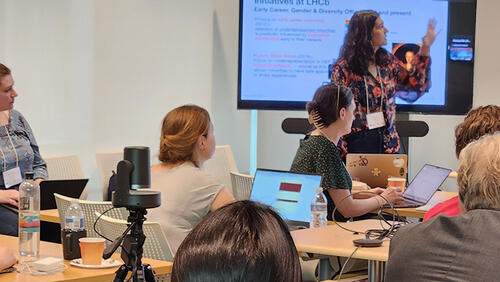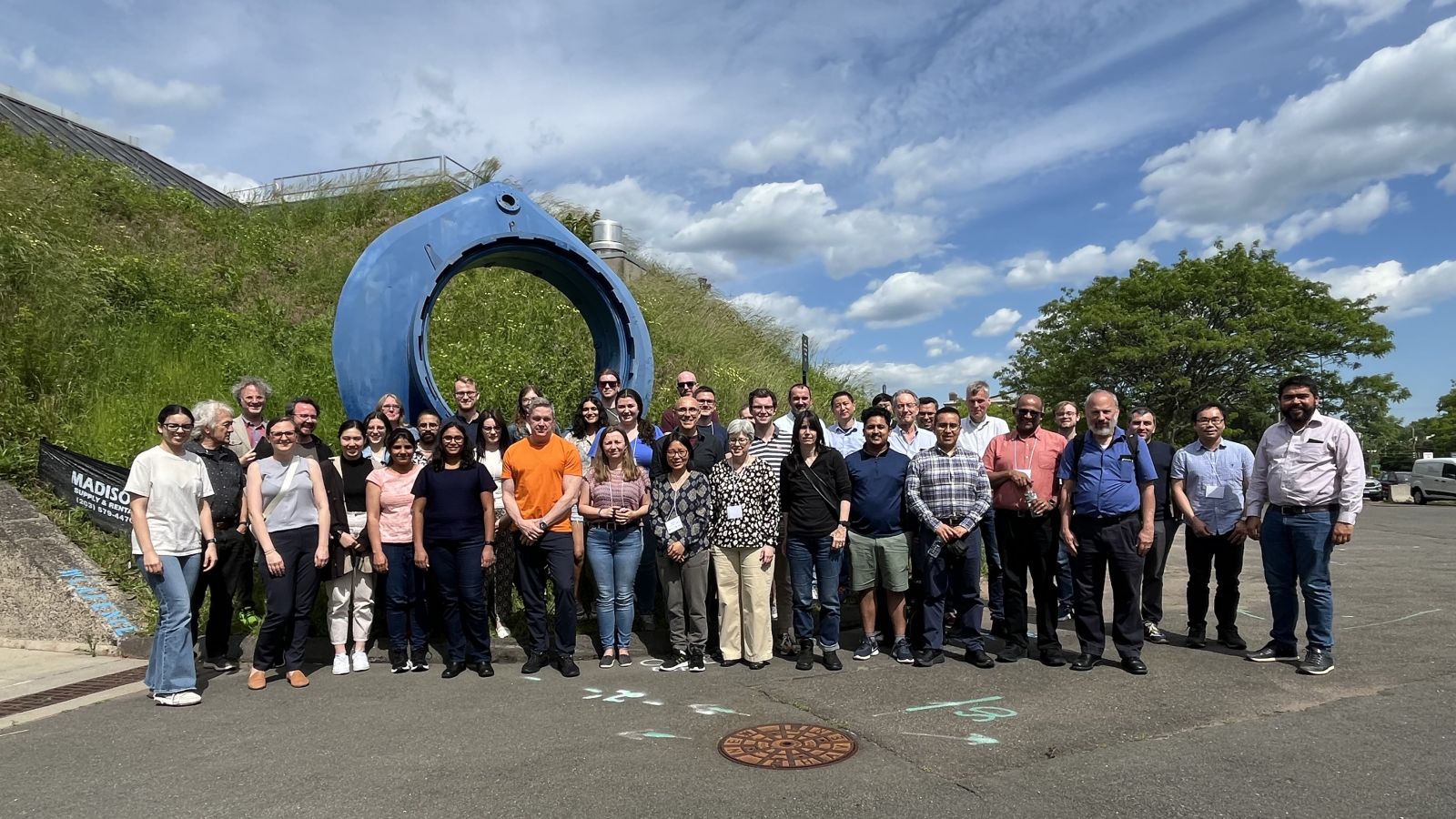
Wright Lab hosted the 2024 ALICE-USA meeting from May 29-31. The meeting included presentations to highlight and facilitate the research work of junior and senior researchers working at the ALICE experiment’s United States institutions. There were also overview talks of the ALICE status and plans, focusing on the efforts led by ALICE institutions in the United States, as well as invited talks from other heavy-ion experiments. Forty-six participants from seventeen institutions registered for the meeting.
The first day of the meeting was dedicated to junior training. It involved ALICE analysis tutorials coupled with an overview of other tools, career development tips, and a presentation on diversity, equity, and inclusion (DEI) initiatives at the Large Hadron Collider (LHC) by Wright Lab graduate student Ananya Rai (seen in the photo, above), an elected Diversity Office representative for the ALICE collaboration.
The second day started with overview talks covering ALICE-USA priorities, discussing physics analysis topics, and detector/software work. The second part of the day was dedicated to talks from ALICE-USA graduate students and postdocs on their latest research studies. The day ended with a group dinner.
The third day included topical talks on physics and future detectors from ALICE-USA members and invited experts from outside experiments and theory. This open session enabled discussion on current and future prospects for the United States in heavy-ion physics.
The meeting was led by Wright Lab assistant professor Laura Havener, ALICE-USA coordinator Anthony Timmons (University of Houston), and ALICE-USA Council chair Daniel Tapia Takaki (University of Kansas); with assistance from Wright Lab’s Horace D. Taft Professor of Physics Helen Caines, D. Allan Bromley Professor Emeritus of Physics John Harris, and senior administrative assistant Paula Farnsworth.
Havener said, “It was our pleasure to welcome our ALICE colleagues from the U.S. and abroad to Wright Laboratory for a productive meeting to discuss current and future physics and detector projects from the US in ALICE. We also had a unique opportunity to host an Open Day with invited speakers from local institutions to discuss the future of heavy-ion physics.”
ALICE is a detector at the LHC located at the Center for European Nuclear Research (CERN) in Geneva, Switzerland, that uses collisions of heavy nuclei, as well as proton-proton and proton-nucleus collisions, to study the physics of strongly interacting matter at the highest energy densities reached so far in the laboratory. The primary goal of the experiment is to re-create the quark-gluon plasma (QGP) state of matter, which is predicted by the Standard Model of particle physics to have existed ten millionths of a second after the Big Bang.
The Relativistic Heavy Ion Group (RHIG) at Yale contributes significantly to ALICE leadership, analyses and papers, and upgrades and commissioning of the detector. RHIG played a key role in the assembly, testing, calibrations and installation of both the electromagnetic calorimeter (EMCal) and the inner sectors of the ALICE Time Projection Chamber upgrade. The group is also engaged in simulations, R&D, design and prototyping of future detectors.
See pictures from the meeting on Flickr here.
Image courtesy of Isaac Mooney


